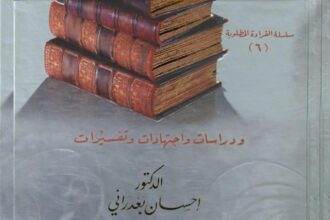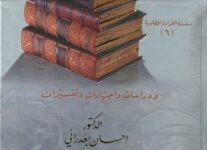Five Theories on the Development of Motor Skills in Children

A theory is a set of concepts, definitions, and assumptions that provide a structured view of an issue through a mechanism that reveals the relationship between changes surrounding that issue, to reach its interpretation, predict its future, and uncover its details through evidence. A theory is a form of explanation that describes how a certain natural physical phenomenon occurs, and it is generally subject to being right or wrong. A theory becomes more valid when it provides readings regarding phenomena that are not yet proven, and then experiments come to prove them. A theory is known as a set of rules and principles used to describe something, whether scientifically, philosophically, or cognitively, to build new thought.
Theories of Growth in Motor Development:
There are five theories we choose concerning the development of motor growth in children, revealing them to the Syrian reader in the hope that they may help in a better understanding of childhood, which forms the foundation of a complete human being in the future. Despite the diversity and multiplicity of theories, there is no single complete theory that fully explains human growth.
First Theory: Freud’s Psychoanalytic Theory
Sigmund Freud, according to his theory, emphasizes the existence of an instinct born with humans called (libido), which is a vital force and psychological energy that moves and affects human behavior. Understanding human behavior, according to Freud, involves identifying the center of libido, which is concentrated in different areas of the body through various stages of growth. The most important of these stages are:
A- Oral Stage: Occurs in the first year of a child’s life, where satisfaction occurs from stimulating the lips, tongue, and mouth. If oral satisfaction is not properly achieved during this stage, the child may develop habits such as thumb-sucking, nail-biting, or possibly smoking in later stages of life.
B- Anal Stage: Occurs in the second and third years of a child’s life, through the child’s development in eliminating body waste and revealing it. According to Freud, stubbornness, and stinginess, among other traits, stem from the experiences a child goes through during this stage.
C- Phallic Stage: From 3 to 6 years, characterized by two complexes: (Oedipus) in boys, where the child is attached to the mother and sees the father as a strong competitor. To resolve this complex, the child must adopt the principles of the father, developing the superego. In girls, there is the (Electra) complex, through the development of feelings towards the father but fearing punishment from the mother and adopting values and ideals respected by the mother, developing the superego in females.
D- Latency Stage: From 6 years until puberty, characterized by calm energy, shifting the child’s interest from self to others by forming relationships and friendships.
E- Genital Stage (Adolescence): The child or adolescent works on freeing themselves from their parents. For boys, it involves breaking away from attachment to the mother, and girls seek marriage. Freud believes that if development succeeds in this stage and previous stages, it will lead to independence, maturity, and raising children.
Second Theory: Jean Piaget’s Theory
Jean Piaget focused on cognitive development and was interested in studying the development of fundamental concepts in children such as time and space. He viewed cognitive development from two angles:
A- Mental Structure, B- Mental Functions.
His theory deals with the nature of knowledge itself, with the child passing through stages:
- Sensorimotor Stage: From birth to 2 years, characterized by primitive actions like responses to stimuli, discovering new ways to solve problems, and the beginnings of imagination, speech, and walking.
- Preoperational Stage: From 2 to 7 years, characterized by the growth of language and thought in the child, with major cognitive development features like (irreversibility).
- Concrete Operational Stage: From 7 to 11 years, characterized by classifying tangible objects (larger – smaller, longer – shorter) and understanding time (yesterday – today – month), with the growth of the ability to distribute attention and the capacity for reversible thinking, for example: addition and subtraction, division and multiplication.
- Formal Operational Stage (Adolescence): Characterized by the ability to think abstractly about concepts like justice and goodness, solving problems, along with the growth of imagination, use of symbols, and understanding of writing and examples.
Third Theory: Robert Sears’ Theory
Robert Sears believed that a child’s behavior is learned and that parents are responsible for regulating and teaching it. They help the child transition from dependence to independence. Sears saw autism as a key method for children to acquire mature behavior. The child imitates their parents’ actions and identifies with the same-gender parent because they want to be like them.
Fourth Theory: Gerald Edelman’s Theory (Dynamic Systems)
Edelman posited that development occurs between neural networks in the brain. The genetic process of neural development is based on experiences that selectively evolve and simultaneously reinforce the child’s neural pathways. Children interact with visual and motor information, mapping this information in the brain, and then reinforcing the neural pathways for reuse whenever the child experiences the same situation. When learning a new skill, the child uses a similar motor map learned previously and applies it to the new skill. When this skill evolves into new behavior, it helps develop other skills in the future.
Fifth Theory: Gesell’s Theory
Gesell did not clearly define the stages of growth in children but rather studied development and the child’s relationship with others from birth until 10 years and from 10 to 16 years. He discussed the characteristics of each age and believed in a growth crisis beginning around 6 years when the child transitions from home to the outside world and school. Gesell’s theory is pioneering in detailing a child’s development in ten crucial areas of life. It emphasized the mechanisms of maturation in relation to learning and training, highlighting the importance of ensuring maturity and readiness before engaging in learning and training. Gesell’s developmental scales provided age benchmarks for various aspects of development, allowing measurement of normal and abnormal growth. Although the developmental ratio concept has been abandoned, it was valuable in outlining normal and abnormal development, remaining useful for pediatricians, educators, and psychologists.
Finally, at the Syrian Future Movement’s Family Affairs Office, we recommend spreading awareness about the developmental growth of children and leveraging scientific theories to help the future generation of Syria advance. We aim to study each theory and its criticisms in our offices to build knowledge for interested parents and teachers, whether in our Tuad educational series schools or other Syrian schools.
References:
- Osama Kamel Ratib: Motor Development (Childhood – Adolescence), 1st Edition, Arab Thought House, Cairo, 1990.
- Mazen Abdul Hadi N Mazen Hadi Karaz: Introduction to Motor Development and Evolution, 2nd Edition, Iraq, 2021.
- Wajih Mahjoub and others: Theories of Learning and Motor Development, Al-Adel Library for Technical Printing, Baghdad, 2000.
- Yaarb Khayun and Adel Fadel: Motor Development and Children’s Tests, Al-Adel Library for Technical Printing, Baghdad, 2007.
- Alaa Omar Abdulaziz, Theories of Motor Development, 2022, Iraq, Al-Mustansiriya University, unpublished.
Waheba Al-Masri
Family Affairs Office
Syrian Future Movement





